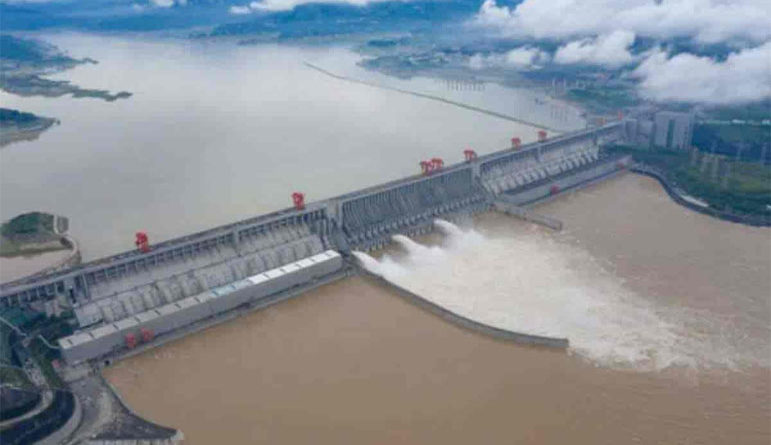China’s Dam In Tibet Will Hit India, Bangladesh Very Hard — Experts
December 12, 2020
With an already intense India-China border row, Beijing’s resolve to build a ‘super dam’ has triggered concerns in India and Bangladesh. Indian experts said this “challenging, costliest, and riskiest” dam could adversely impact the downstream states.
According to Chinese state media reports, as part of China’s 14th Five-Year Plan (2021-25) by the Central Committee of the Chinese Communist Party (CCP), China will build a ‘super dam’ on the Yarlung Zangbo River, (as the Brahmaputra is known in Tibet) in the Tibet Autonomous Region.
The head of the company responsible for the hydropower project stated that the project could serve to maintain water resources and domestic security. “It is a project for national security, including water resources and domestic security,” the POWERCHINA chairman Yan Zhiyong told Global Times, a state-owned publication.
The move has alarmed New Delhi at a time when the India-China border row doesn’t seem to be reaching a resolution. India’s External Affairs Minister S Jaishankar has blamed China for “five differing explanations” for the deployment of thousands of troops at the Line of Actual Control (LAC).
He said that this is the most difficult phase for the two neighbors. “We are today probably at the most difficult phase of our relationship with China, certainly in the last 30 to 40 years or you could argue even more.”
Sheikh Rokon, secretary-general of environment campaigners Riverine People in Bangladesh, said that multilateral discussion should be held before China builds any dams, reported Reuters. “China’s downstream neighbors have a legitimate cause for concern. Water flow will be disrupted,” he said.
Reportedly, the new dam will generate three times more hydropower than China’s Three Gorges Dam, the largest hydropower facility in the world. Yan revealed that 60 million kWh hydropower exploitation in the downstream of the Yarlung Zangbo River could provide 300 billion kWh of clean, renewable, and zero-carbon electricity annually.
Besides helping China realize its goal of reaching a carbon emissions peak before 2030 and carbon neutrality in 2060, the project will help China’s national security, including water resources and domestic security,” he said.
India fears that the dam will allow China to control the flow of water of the Brahmaputra river. In order to safeguard its interest, the Union water ministry announced plans to build its own dam in Arunachal Pradesh. “The need of the hour is to have a big dam in Arunachal Pradesh to mitigate the adverse impact of the Chinese dam projects,” T S Mehra, a senior official in the Union water ministry, told Reuters.
Analysts have raised concerns about the timing of the announcement amid the ongoing border conflict between India and China. Dechen Palmo, research fellow, Tibetan Policy Institute, Central Tibetan Administration wrote in an article that the timing of the announcement of the dam can be linked to the ongoing border tensions, which is rooted in China’s refusal to acknowledge the McMahon Line.
Earlier, Beijing reiterated its claim on Arunachal Pradesh calling it a part of South Tibet. Chinese Foreign Ministry Spokesperson, Zhao Lijian, said that “the Chinese government has never recognized the so-called ‘Arunachal Pradesh’ illegally established on the Chinese territory”.
India’s Ministry of External Affairs spokesperson Anurag Srivastava said in a media briefing that India has shared its concerns with China about the construction of the dam at the low reaches of Yarlung Zangbo river near the LAC and Beijing has assured the hydro project wouldn’t divert the flow of the Brahmaputra.
“We have urged them to ensure that the interest of downstream states isn’t harmed by activities in upstream areas. Chinese side conveyed to us on several occasions that they’re only undertaking run-of-river hydropower projects which don’t involve diversion of waters of Brahmaputra,” said Srivastava.
Himanshu Thakkar, the coordinator of the South Asia Network on Dams, Rivers & People, explained the impact of building the world’s “challenging, costliest, and riskiest” dam. He said that the flow pattern of the water could adversely impact the downstream in India and Bangladesh. “It depends on how China releases water,” adding that during the Monsoon, a sudden release of water can cause floods in the region.
Thakkar, who has been associated with the water and environment sector for about three decades, further explained that it could have severe ecological impacts as well. He pointed out that when the dam stores water, it also stores sediments with it which can cause the water to lose its silt. This water then affects the fisheries and swarms as sediment-free water will have greater erosion capacity.
On being asked about the Indian government’s plan to build its own dam to mitigate the effect of China’s ‘super dam’, Thakkar said that instead of a “knee-jerk reaction,” the government should raise demands for a joint impact study between India and China.
He emphasized that building a dam wouldn’t solve the problem, but instead create new problems including its own river fluctuations and other ecological impacts. “It would be like a self-inflicted wound,” added Thakkar, who also edits a magazine, Dams, Rivers & People’.
He suggested that using Indian satellites by the government to monitor any cross-border construction could be helpful in measuring China’s words with its actions.
Courtesy: The Eurasian Times

